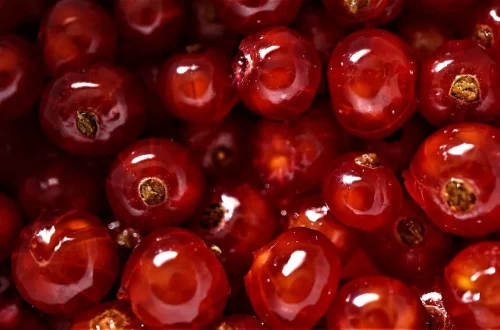
Effective Ways to Reduce Redness on Your Face Naturally
Redness on the face can be a frustrating and often embarrassing issue for many individuals. It can result from various factors, including environmental irritants, skin conditions, or even emotional triggers. The skin is the body’s largest organ, and its appearance can significantly impact one’s self-esteem and confidence. Moreover, redness can be a sign of underlying inflammation or irritation, which calls for attention and care.
Many people turn to commercial products to address this concern; however, natural remedies offer a gentler alternative without the risk of harsh chemicals. Embracing natural methods not only nurtures the skin but also aligns with a holistic approach to health and wellness. By understanding the root causes of facial redness and exploring effective natural solutions, individuals can achieve a more balanced and even complexion.
In this article, we will discuss several natural ways to reduce facial redness. These methods are accessible, affordably priced, and can easily be integrated into your daily skincare routine. Let’s delve into these effective strategies that can help you achieve a calm and radiant complexion.
Understanding the Causes of Facial Redness
To effectively tackle facial redness, it is crucial to understand its underlying causes. Redness can stem from various sources, including skin conditions such as rosacea, eczema, or acne. Each of these conditions can lead to inflammation of the skin, resulting in noticeable redness. For instance, rosacea is a chronic skin condition characterized by flushing and persistent redness, often accompanied by visible blood vessels.
In addition to skin conditions, environmental factors can also contribute to facial redness. Exposure to extreme temperatures, whether hot or cold, can irritate the skin and lead to a flushed appearance. Similarly, sunburn is a common culprit, as excessive UV exposure can cause inflammation and redness.
Moreover, lifestyle factors play a significant role in skin health. Stress can trigger redness by increasing blood flow to the skin’s surface, while certain foods and beverages, particularly spicy foods and alcohol, can exacerbate flushing. Allergies to skincare products, cosmetics, or even pollen can lead to irritations that manifest as redness.
Understanding these causes is the first step towards finding effective natural remedies. By identifying triggers, you can take proactive measures to minimize their impact on your skin.
Soothing Ingredients for Skin Care
Natural ingredients can be incredibly effective in soothing irritated skin and reducing redness. One of the most popular soothing agents is aloe vera, known for its anti-inflammatory properties. Aloe vera gel can hydrate the skin while calming irritation, making it a go-to remedy for redness. Applying fresh aloe vera directly to the affected areas can provide immediate relief and promote healing.
Another powerful ingredient is chamomile. Chamomile is often used in skincare for its calming effects. You can brew chamomile tea, let it cool, and use it as a compress on your face. The antioxidants and anti-inflammatory properties in chamomile can help reduce redness and promote a more even skin tone.
Additionally, green tea is another excellent choice. Rich in polyphenols, green tea has anti-inflammatory properties that can help soothe the skin. You can use cooled green tea as a toner or incorporate it into your skincare routine by using products that contain green tea extract.
Oatmeal is also a fantastic natural remedy for facial redness. It contains compounds that help soothe irritation and promote skin healing. You can create an oatmeal mask by mixing ground oats with water or yogurt and applying it to your face for 15-20 minutes. Rinse with lukewarm water for a calming effect.
Incorporating these soothing ingredients into your skincare routine can significantly reduce redness and improve overall skin health.
Hydration and Diet for Healthy Skin
Maintaining proper hydration is essential for healthy skin. Dehydrated skin can become irritated and more prone to redness. Drinking plenty of water throughout the day helps keep the skin hydrated from within, promoting a clearer and more balanced complexion. Aim for at least eight glasses of water daily, adjusting based on your activity level and environmental conditions.
Moreover, your diet plays a crucial role in skin health. Incorporating anti-inflammatory foods can help mitigate redness. Foods rich in omega-3 fatty acids, such as salmon, walnuts, and flaxseeds, can reduce inflammation and improve skin health. Additionally, fruits and vegetables high in antioxidants, like berries, spinach, and sweet potatoes, can combat oxidative stress, promoting a healthy glow.
Avoiding processed foods, sugar, and excessive salt can also be beneficial. These foods can trigger inflammation in the body, leading to skin flare-ups. Instead, focus on whole foods that nourish your body and skin.
In addition to hydration and diet, consider incorporating supplements that support skin health. Omega-3 supplements, vitamin E, and zinc can be beneficial for reducing inflammation and promoting skin repair. However, always consult with a healthcare provider before adding any supplements to your routine.
By focusing on hydration and a balanced diet, you can create a strong foundation for healthy, radiant skin while reducing the likelihood of redness.
Stress Management Techniques
Stress is often an overlooked factor when it comes to skin health. The body’s response to stress can manifest in various ways, including increased redness and irritation on the face. Therefore, implementing stress management techniques can be a vital part of reducing facial redness.
Mindfulness practices, such as meditation and yoga, can significantly lower stress levels. These practices encourage relaxation and awareness, helping to calm the mind and body. Regularly engaging in mindfulness can lead to improved emotional well-being and, consequently, healthier skin.
Deep breathing exercises are another effective way to manage stress. Taking a few moments each day to focus on your breath can help alleviate tension and promote relaxation. Consider setting aside time in your daily routine for these exercises.
Physical activity is also a powerful tool for managing stress. Engaging in regular exercise releases endorphins, the body’s natural stress relievers, which can improve mood and reduce skin flare-ups. Whether it’s a brisk walk, a workout at the gym, or a calming yoga session, find an activity that you enjoy and can incorporate into your routine.
Creating a balanced lifestyle that prioritizes self-care and stress management can lead to improved skin health. By reducing stress, you not only enhance your mental well-being but also contribute to a clearer, more even complexion.
In conclusion, while redness on the face can be a challenging issue, natural remedies and lifestyle adjustments can provide effective solutions. By understanding the causes, utilizing soothing ingredients, maintaining hydration and a balanced diet, and managing stress, you can significantly reduce facial redness and promote healthy skin.
**Disclaimer:** This article is for informational purposes only and does not constitute medical advice. For any health issues or concerns, please consult a healthcare professional.




